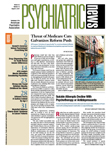The U.S. Food and Drug Administration (FDA) has issued an approvable letter to Shire for its extended-release formulation of guanfacine (Intuniv), a selective alpha-2A-receptor agonist, for the treatment of attention-deficit/hyperactivity disorder (ADHD) in children and adolescents. This letter indicates that the FDA expects to approve the product if certain questions or requests are addressed to its satisfaction.
The manufacturer of the product, Shire, submitted a new drug application in August 2006 on the basis of data from two placebo-controlled clinical trials in ADHD patients aged 6 to 17.
Various animal and human studies have shown that norepinephrine and alpha-2A-adrenergic receptor activation play an important role in cognitive functions and impulse control. Alpha-2A-receptor agonists such as clonidine and guanfacine enhance the neurological activity in the prefrontal cortex, a region of the brain involved in planning, impulse control, and organization. Prefrontal cortex dysfunction is consistently detected on structural and functional brain imaging in people with ADHD. In addition, genetic research has found evidence to support the link between the alpha-2A-adrenergic receptor gene (ADRA2A) and patients' response to methylphenidate, especially in the inattentive dimension of ADHD symptoms.
Agonists of the alpha-2A-adrenergic receptors such as clonidine and guanfacine (immediate-release) have been used to treat ADHD symptoms in clinical practice, often as an adjunct to stimulants.
The side effects of alpha-2A agonists include drowsiness, drop in blood pressure, irritability, dry mouth, constipation, dizziness, and sleep disturbance. Guanfacine may have fewer severe side effects in the central nervous system than clonidine because it is more selective than clonidine in binding with alpha-2A-adrenergic receptors, said Amy Arnstern, Ph.D., a professor of neurobiology at Yale University School of Medicine, in a review of the biochemistry of ADHD published in the September 2000 Journal of the American Academy of Child and Adolescent Psychiatry.
The therapeutic position statement put forth by the American Society of Health-System Pharmacists on the treatment of ADHD in children recommends that patients' vital signs be monitored. Electrocardiogram monitoring is recommended but “controversial.” The guidelines recommend that patients be started on a lower dose and gradually increased. Tapering over several weeks may be necessary when a drug is discontinued, as rebound symptoms associated with abrupt cessation of central 2-adrenergic agonists, such as nervousness, anxiety, and increases in blood pressure, may occur, according to guanfacine prescribing information.
Guanfacine is currently available in immediate-release formulation (1 mg and 2 mg tablets) by various manufacturers for the indication of hypertension. It is taken once or twice daily. Shire's application for guanfacine extended-release is intended for once-daily use with dosage ranging from 1 mg to 4 mg.
If approved, guanfacine extended-release will be an addition to the nonstimulant ADHD treatment with FDA-approved labeling. Atomoxetine (Strattera), a selective norepinephrine reuptake inhibitor that also increases the action of norepinephrine in the prefrontal cortex, was the first nonstimulant drug approved to treat ADHD in children, adolescents, and adults.▪
